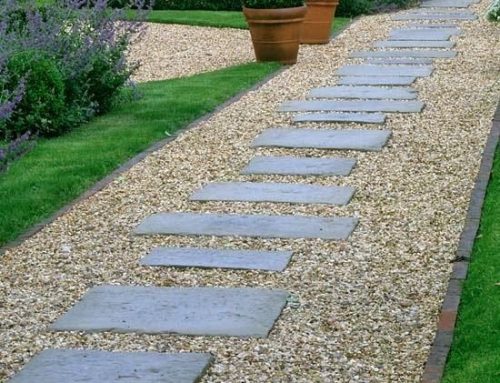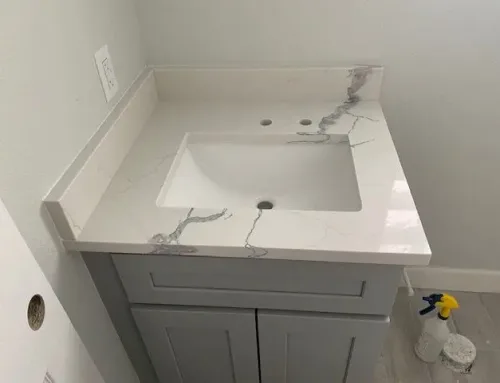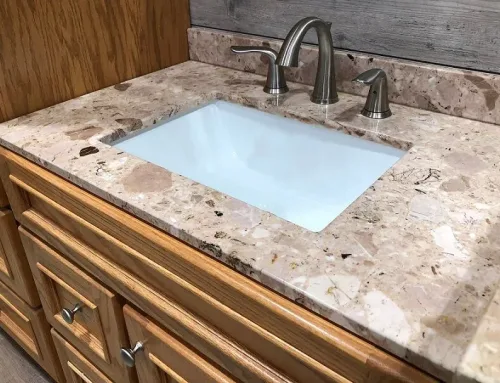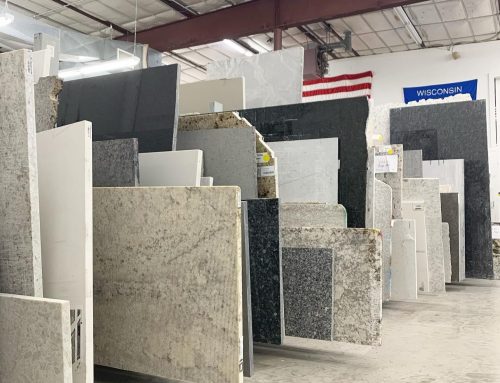What is quartz fabrication? Quartz fabrication is the intricate process of transforming raw quartz slabs into beautifully crafted surfaces like countertops, backsplashes, and other design elements tailored to specific spaces. This process involves a combination of advanced technology, skilled craftsmanship, and precision to ensure that each piece not only fits perfectly but also enhances the aesthetics and functionality of a space.
Understanding Quartz as a Material
Quartz ranks among the hardest minerals on Earth, but transforming it into the polished slabs you see in showrooms requires a bit of processing. Manufacturers create quartz slabs by engineering a mix of approximately 90-95% crushed natural quartz with resin binders and pigments. This composition makes quartz non-porous, durable, and available in a wide range of colors and patterns—qualities that make it a popular choice for modern interiors.
The Steps Involved in Quartz Fabrication
1. Measurement and Template Creation: The first step in quartz fabrication is understanding the specific dimensions and design requirements of the project. Fabricators use precise measurements to create templates that guide the cutting and shaping of the quartz slab.
2. Selecting and Cutting the Slab: Once a quartz slab has been selected for its pattern, color, and thickness, it’s cut to the required size using specialized equipment such as waterjet cutters or diamond blade saws. These tools ensure smooth and precise cuts, reducing waste and achieving clean edges.
3. Edge Profiling: The edges of the quartz surface are shaped and polished to achieve the desired profile. Popular edge options include beveled, bullnose, ogee, and straight edges. Each style can complement different design aesthetics, from modern and sleek to classic and ornate.
4. Sink and Appliance Cutouts: During fabrication, cutouts are made for sinks, faucets, and any other appliances that will integrate into the quartz surface. This step requires precision to avoid compromising the slab’s integrity.
5. Polishing: Once the slab is shaped and cut, the surfaces and edges are polished to achieve the desired finish. Quartz can be finished in a variety of ways, including polished (shiny), honed (matte), or textured, depending on the client’s preference.
6. Seaming: If the quartz surface requires multiple pieces to cover a large area, fabricators take extra care to create nearly invisible seams. This involves aligning the pieces perfectly and using color-matched adhesives.
7. Installation: Finally, the fabricated quartz is transported to the site and installed. This step involves leveling, securing the surface, and ensuring proper alignment with cabinetry and walls. The result is a seamless, durable, and stunning quartz feature.
Benefits of Professional Quartz Fabrication
- Customization: Professional fabricators can tailor quartz surfaces to fit unique spaces and achieve your design vision.
- Precision: Advanced tools and techniques ensure every cut and edge is flawless.
- Durability: Proper fabrication ensures the longevity of your quartz surface by minimizing the risk of chipping or cracking.
- Aesthetic Appeal: Expert fabrication enhances the natural beauty of quartz, ensuring patterns and veins align beautifully.
Why Choose Quartz?
Quartz is a favorite among homeowners and designers due to its versatility, low maintenance, and aesthetic diversity. Also it’s resistant to stains, scratches, and heat, making it ideal for kitchens, bathrooms, and other high-traffic areas. Furthermore, the vast array of designs—from marble-like veining to solid colors—ensures a perfect match for any style.
Conclusion
So what is quartz fabrication? Quartz fabrication is much more than just cutting a slab to size; it’s an art and science that requires attention to detail and a commitment to excellence. Whether you’re remodeling your kitchen, designing a luxurious bathroom, or adding a statement piece to your home, quartz fabrication offers the perfect blend of beauty, durability, and functionality to bring your vision to life.





